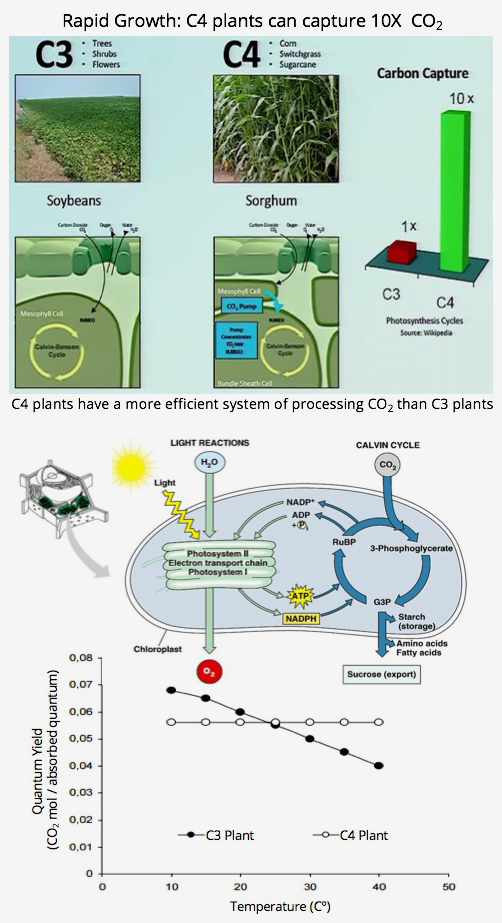Energy Crops – Biomass Generation
Photosynthesis C3 (Trees) x C4 (Energy Cane)
In the process of photosynthesis, plants convert radiant energy from the sun into chemical energy in the form of glucose and other sugars.

The initial process in photosynthesis is the decomposition of Water (H2O) into Oxygen, which is released, and Hydrogen; Direct light is required for this process.
The Hydrogen and the Carbon and Oxygen of Carbon Dioxide (CO2) are then converted into a series of increasingly complex compounds that result finally in a stable organic compound, glucose (C6H12O6), and Water. This phase of photosynthesis utilizes stored energy and therefore can proceed in the dark.
There are three types of photosynthesis: C3, C4 and CAM. C3 photosynthesis occurs in woody, round-leafed plants, which are 95% of all plants. C4 and CAM are more efficient in water and energy use. C4 plants photosynthesize much faster under high heat and light conditions than C3 plants.
C4 photosynthesis provide competitive advantages in environment with high temperature and high sun light. The C4 photosynthesis plants are more adapted to high temperatures and light conditions than C3 plants. Also C4 plants utilize water more efficiently.
In the issues related to climate change, where average temperature increase associated with rising of CO2 levels in the atmosphere and water scarcity, C4 type plants are more adaptable under these new climate conditions.

